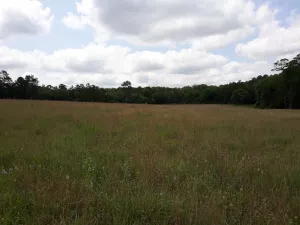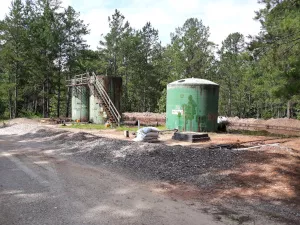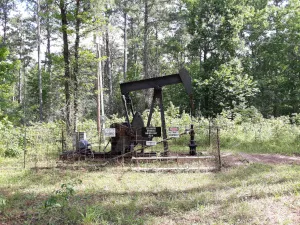On May 27, 2023, the Houston Regional Group and Lone Star Chapter of the Sierra Club (Sierra Club) sent the U.S. Forest Service (FS) scoping comments for the proposed Harmon Creek Project (HCP) on 5,220 acres in Compartments 59-63 in Sam Houston National Forest (SHNF).
This is the first stage of collaboration between the Sierra Club and the FS on the proposed HCP which. The Sierra Club requested that there be an in-the-field meeting with the FS to visit Compartments 59-63. The proposed HCP includes:
1. Shortleaf Emphasis on 1,591 acres including thinning of Loblolly Pine and retention of Shortleaf Pine; relict/healthy Shortleaf Pine trees would be favored for retention; and mulching of understory.
2. Shortleaf Pine Restoration on 188 acres in two Slash Pine stands would be clearcut to restore Shortleaf Pine; mechanical/prescribed burn site preparation; herbicide site preparation if needed; planting of Shortleaf Pine seedlings; use of hand tools to remove overtopped trees/shrubs; and frequent prescribed fire on a one-year interval to control vegetation.
3. Thinning 2,601 acres of Loblolly Pine on uplands and mesic lower slopes; relict/healthy Loblolly Pine trees will be favored for retention; and mechanical mulching.
4. Blackland Prairie Management on 236 acres with removal of woody vegetation, planting of bunch grasses and prescribed burning, creation of areas with forest on blackland soils, mulching, and prescribed fire for individual prairies and burning across stands.

5. Mulching 857 acres (5 inches wide or smaller) in pine stands. Total mulching acres for the proposed HCP is 5,285 acres.
6. Prescribed Burning 5,032 acres potentially every year.
The Sierra Club visited Compartment 60 on May 25, 2023. Some of the comments the Sierra Club made to the FS include:
1. The FS should establish along streams a mesic lower slope transition zone to protect and stabilize stream channels and to provide for landscape biodiversity.
2. There are numerous oil/gas facilities in Compartment 60. Some of the reserve pits smell of oil and have an oily stain in the pits located around and next to the tanks and other equipment.

The Sierra Club requested that the FS conduct a survey and investigation of the oil/gas facilities along FR 236 and its ancillary roads to ensure that FS pollution standards/guidelines and other requirements are being followed and that the operators comply with all laws/regulations.

3. In Stand 10, the blackland prairie is horseshoe shaped. Within the horseshoe there is a wooded knoll with a streamside zone at the southern end. This area has Black Hickory trees and other hardwood vegetation, along with pines that reflect the woody vegetation of blackland prairies.
The Sierra Club requested that this knoll not be logged/mulched. Logging/mulching will create compaction and erosion problems on the knoll due to the sandy/blackland soils.
4. Due to the size of the proposal (over 5,000 acres); the significance of Shortleaf Pine restoration; the need to protect blackland soils/vegetation; the need to protect the Harmon Creek Watershed and water quality; the importance of the establishment of transition zones on mesic lower slopes/terraces; the importance of wide protected 100-year floodplains; and the need for increased heterogeneity and biodiversity on the landscape, the Sierra Club requests that an environmental assessment (EA) be conducted under the National Environmental Policy Act (NEPA) and not a categorical exclusion (CE).
5. The Shortleaf Pine Ecosystem restoration for the proposed HCP doesn’t provide for groundcover/understory plant indicator species. Only Shortleaf Pine seedlings are proposed for Shortleaf Pine Ecosystem restoration.
The Sierra Club recommended that Shortleaf Pine Ecosystem restoration plant indicators for groundcover/understory be added to monitor and provide for landscape heterogeneity. Currently, only Shortleaf Pine seedling health and growth is monitored for restoration success.
6. The FS proposes thinning/mulching of mesic lower slopes. Recently, the Ecological Classification System (ECS) has been updated to include transition zones on mesic lower slopes/terraces.
The Sierra Club requests the FS establish mesic lower slope/terrace transition zones in Compartments 59-63, before thinning, to mimic the forest structure and composition that used to occur on the boundary of floodplain of streams.
The Sierra Club favors a “no thinning/mulching” mesic lower slope transition zone. If the FS won’t do this, then the Sierra Club supports leaving a higher density of trees on mesic lower slopes/terraces.
Mesic lower slopes/terraces, because of higher moisture content, normally have higher tree densities than uplands and a greater diversity of tree species and structural heights and provide greater heterogeneity and biodiversity across the landscape.
Timber and Red-cockaded Woodpecker management by the FS in the past forced growth of almost pure Loblolly Pine into transition and even streamside zones. This type of management isn’t required and shouldn’t be implemented, maintained, or continued for the proposed HCP.
The Sierra Club requests a transition zone that begins at the end of the stream floodplain and goes upslope to at least the first lower slope/terrace topographic change or is at least 100 feet wide or wider.
7. The Sierra Club favors streamside management zones in the proposed HCP that encompass the entire 100-year floodplain. Logging/mulching of the floodplain reduces species diversity, composition, and structure of riparian woodlands and bottomland hardwood forests on the floodplain.
8. The Sierra Club supports the proposed restoration of blackland prairies.
9. Compartments 59-63 should be surveyed for old growth categories as required by the Forest Plan and appropriate stands should be designated as some form of old growth. The Sierra Club requests that Compartment 60, Stand 9, Bottomland Hardwood-Yellow Pine, 29 acres, 123 years old, be designated as old growth.
The FS proposes to log Stand 9. The Sierra Club is opposed to logging this riparian hardwood dominated stand and requests that no treatments, other than prescribed burning, be applied to Stand 9, and that this stand be designated an old growth stand.
Photos and article by Brandt Mannchen.